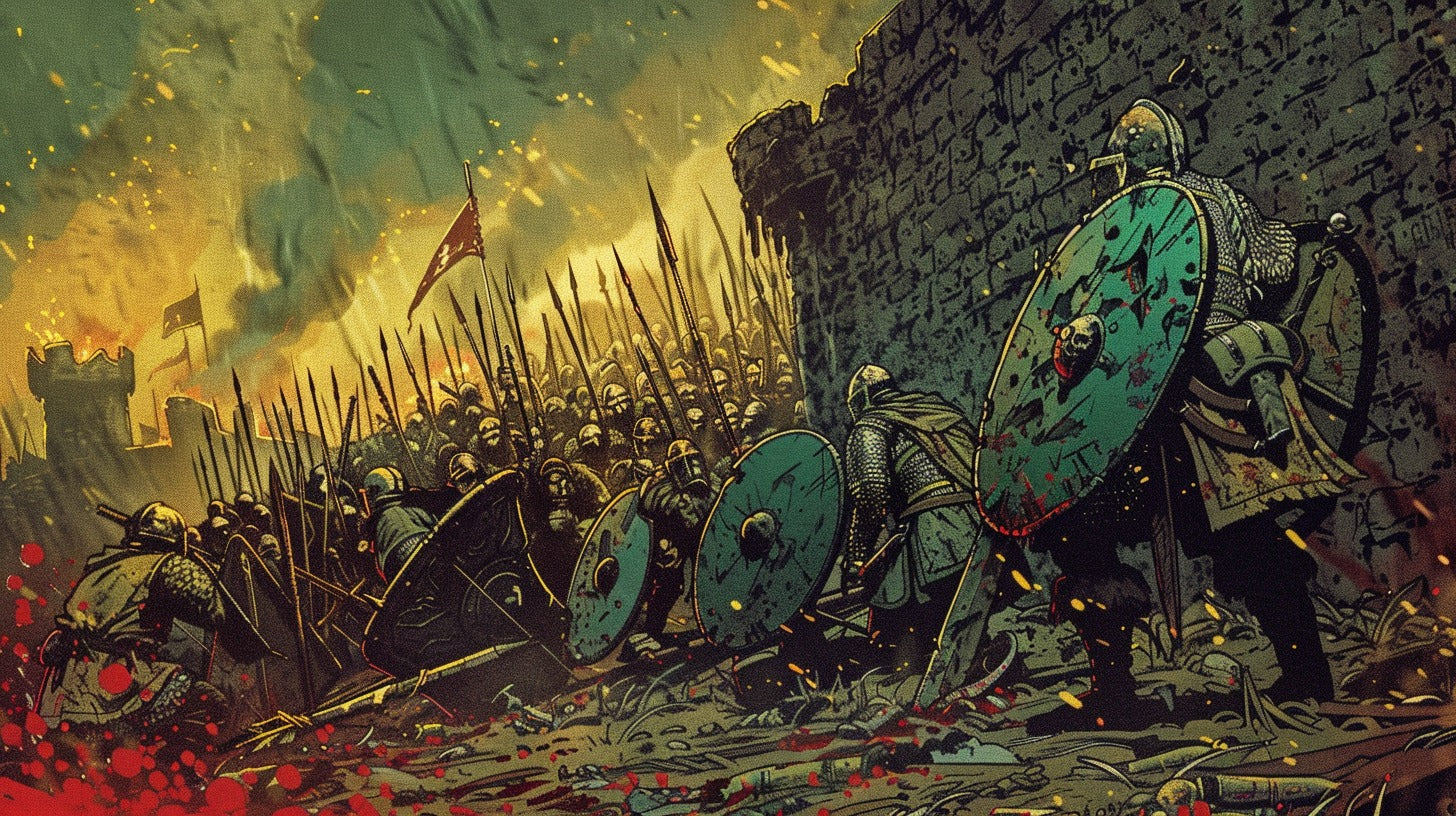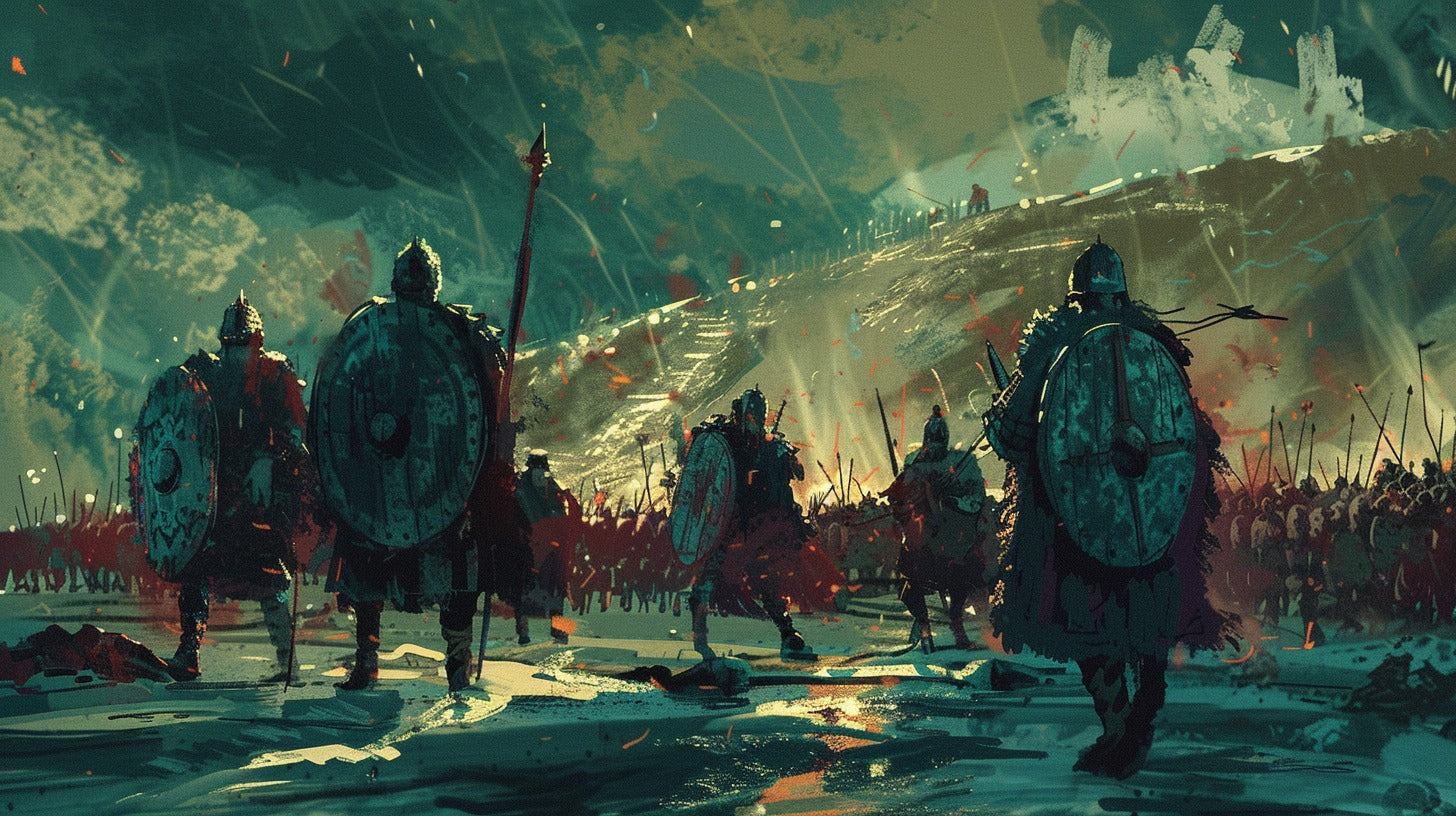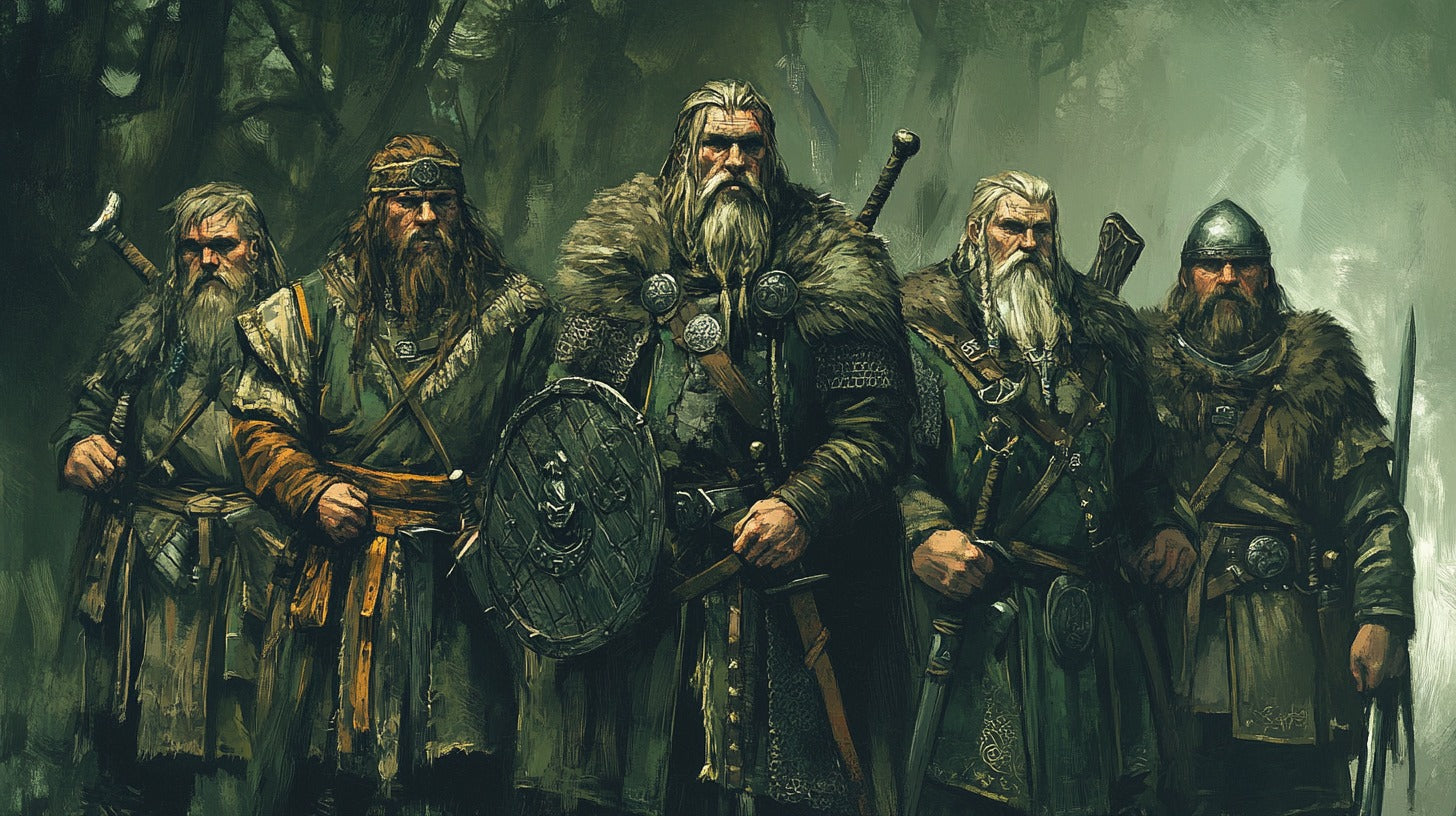
From Eoforwic to Jórvík: The Great Heathen Army's Fateful Siege of York
In English history, few events loom as large or as ominously as the capture of York by the Great Heathen Army in 866 CE. It was a moment when the very foundations of Anglo-Saxon England trembled, and the future of the island hung in the balance. The clash of steel, the roar of dragon-prowed longships, and the battle cries of Norse warriors would echo through the centuries, forever changing the face of Britain.
The Origins of the Great Heathen Army

The Call for Vengeance
The story of the Great Heathen Army begins not with conquest, but with vengeance. In the cold halls of Denmark, the sons of the legendary Ragnar Lodbrok - Ivar the Boneless, Halfdan, and Ubba - plotted revenge for their father's death at the hands of Ælla, King of Northumbria. Their call to arms resonated through the fjords and valleys of Scandinavia, drawing warriors like moths to a flame.
Gathering of the Norse Forces
From Norway, Sweden, and Denmark they came, hardened warriors with axes in hand and dreams of glory in their hearts. Some sought riches, others land, and still others the favor of the gods. But all were united under the banner of the ravens, ready to unleash a storm upon the shores of England that would make the very heavens tremble.
The Strategic Importance of York

A well-preserved shoe of Norse origin discovered in York, now located in the British Museum / Photo: Alh1, CC BY-ND 2.0
York's Historical Significance
York, or Eoforwic as it was known to the Anglo-Saxons, was no ordinary prize. Founded by the Romans as Eboracum, it had stood for centuries as a bastion of civilization in the north. Its walls had withstood the test of time, its streets echoed with the footsteps of kings and commoners alike. To control York was to hold the key to Northumbria, and by extension, to the heart of England itself.
The City's Defenses
The defenses of York were formidable, a testament to Roman engineering and Anglo-Saxon determination. Stone walls rose high above the surrounding plain, while the Rivers Ouse and Foss provided natural barriers. But would these ancient fortifications be enough to withstand the fury of the Northmen?
The Viking Invasion of Northumbria

Initial Landings and Advance
Like a storm breaking upon the shore, the Great Heathen Army landed on English soil in 865. They swept through East Anglia, their longships striking terror into the hearts of all who saw them. But it was Northumbria that was their true target, and as they marched north, the very earth seemed to tremble beneath their feet.
The Battle of York
As the army approached York, the air grew thick with tension. The defenders of the city, led by the Northumbrian kings Ælla and Osberht, prepared for the fight of their lives. The clash, when it came, was like thunder. Shield walls met in a frenzy of steel and blood, the screams of the dying mingling with the battle cries of the living.
The Fall of York

A Viking sword discovered in York / Photo: One lucky guy, CC BY-NC-SA 2.0
Breaching the Walls
Despite the valor of its defenders, York's walls could not withstand the fury of the Viking assault. Like water finding cracks in a dam, the Norse warriors found weaknesses in the city's defenses. With axes and battering rams, they tore at the gates and scaled the walls, their war cries echoing through the streets.
The Fate of the Defenders
As the Vikings poured into the city, the fate of York's defenders was sealed. King Ælla, the man whose actions had sparked this invasion, met a gruesome end at the hands of Ivar the Boneless. The infamous "blood eagle" ritual, whether fact or legend, speaks to the brutality of the conquest and the depth of Viking vengeance.
Aftermath and Consequences

Establishment of Viking Rule
With York in their grasp, the Vikings wasted no time in establishing their rule. The Great Heathen Army, once a roving force of destruction, now set about the task of governance. Ivar the Boneless installed himself as the ruler of York, marking the beginning of a new era in the city's long history.
Impact on Anglo-Saxon England
The fall of York sent shockwaves through Anglo-Saxon England. It was more than just the loss of a city; it was a challenge to the very order of things. The Vikings had proven that they were not mere raiders, but conquerors capable of toppling kingdoms. The balance of power in England had shifted, and nothing would ever be the same.
Legacy of the Great Heathen Army's Conquest

The York Viking Festival / Photo: James Laing, CC BY-NC-ND 2.0
Cultural and Political Changes
The Viking conquest of York brought with it a wave of cultural and political changes. Norse customs, language, and beliefs began to intermingle with those of the Anglo-Saxons, creating a unique blend that would shape the region for generations to come. The political landscape of England was redrawn, with the Danelaw emerging as a stark division between Anglo-Saxon and Viking-controlled territories.
York as a Viking Capital
Under Viking rule, York - now known as Jórvík - flourished as never before. It became a center of trade and culture, drawing merchants and artisans from across the known world. The narrow streets bustled with activity, the air filled with the sounds of a dozen languages. York had always been a great city, but under the Norsemen, it truly became a capital worthy of legends.
Conclusion: The Echoes of Conquest
The capture of York by the Great Heathen Army in 866 CE was more than just a military victory; it was a pivotal moment that altered the course of English history. It marked the beginning of a period of Viking domination that would last for generations, reshaping the cultural, political, and social landscape of Britain.
As we look back across the centuries, we can still hear the echoes of that fateful day when Norse axes splintered York's gates. The legacy of the Great Heathen Army lives on in the place names, the bloodlines, and the very stones of modern-day York. It serves as a reminder of the complex tapestry of invasion, resistance, and assimilation that has woven the fabric of English identity.
In the end, the story of York's fall is not just one of conquest, but of transformation. It speaks to the resilience of a city that has endured through the ages, absorbing and adapting to each new wave of invaders. From Roman fort to Anglo-Saxon burh to Viking capital, York stands as a testament to the enduring spirit of a people who have faced the storms of history and emerged, changed but unbroken, on the other side.
FAQs
- Who led the Great Heathen Army in the capture of York?
The army was led by the sons of Ragnar Lodbrok, particularly Ivar the Boneless, Halfdan, and Ubba.
- What year did the Great Heathen Army capture York?
York fell to the Great Heathen Army in 866 CE.
- What was the significance of capturing York for the Vikings?
York was a strategically important city, controlling access to Northumbria and serving as a key political and economic center.
- How did the capture of York affect Anglo-Saxon England?
It marked the beginning of extensive Viking control in England, leading to the establishment of the Danelaw and significant cultural and political changes.
- What happened to York after its capture by the Vikings?
York, renamed Jórvík, became a thriving Viking capital and an important center of trade and culture under Norse rule.
References
Richards, J.D. (2004). Viking Age England. Tempus Publishing.
Forte, A., Oram, R., & Pedersen, F. (2005). Viking Empires. Cambridge University Press.
Hall, R.A. (1994). Viking Age York. Batsford Ltd.
Hadley, D.M. (2006). The Vikings in England: Settlement, Society and Culture. Manchester University Press.
Swanton, M. (Trans.). (2000). The Anglo-Saxon Chronicles. Phoenix Press.
"York Viking Festival" by James Laing is licensed under CC BY-NC-ND 2.0.
"A Viking sword. York, England" by One lucky guy is licensed under CC BY-NC-SA 2.0.
"British Museum" by alh1 is licensed under CC BY-ND 2.0.

